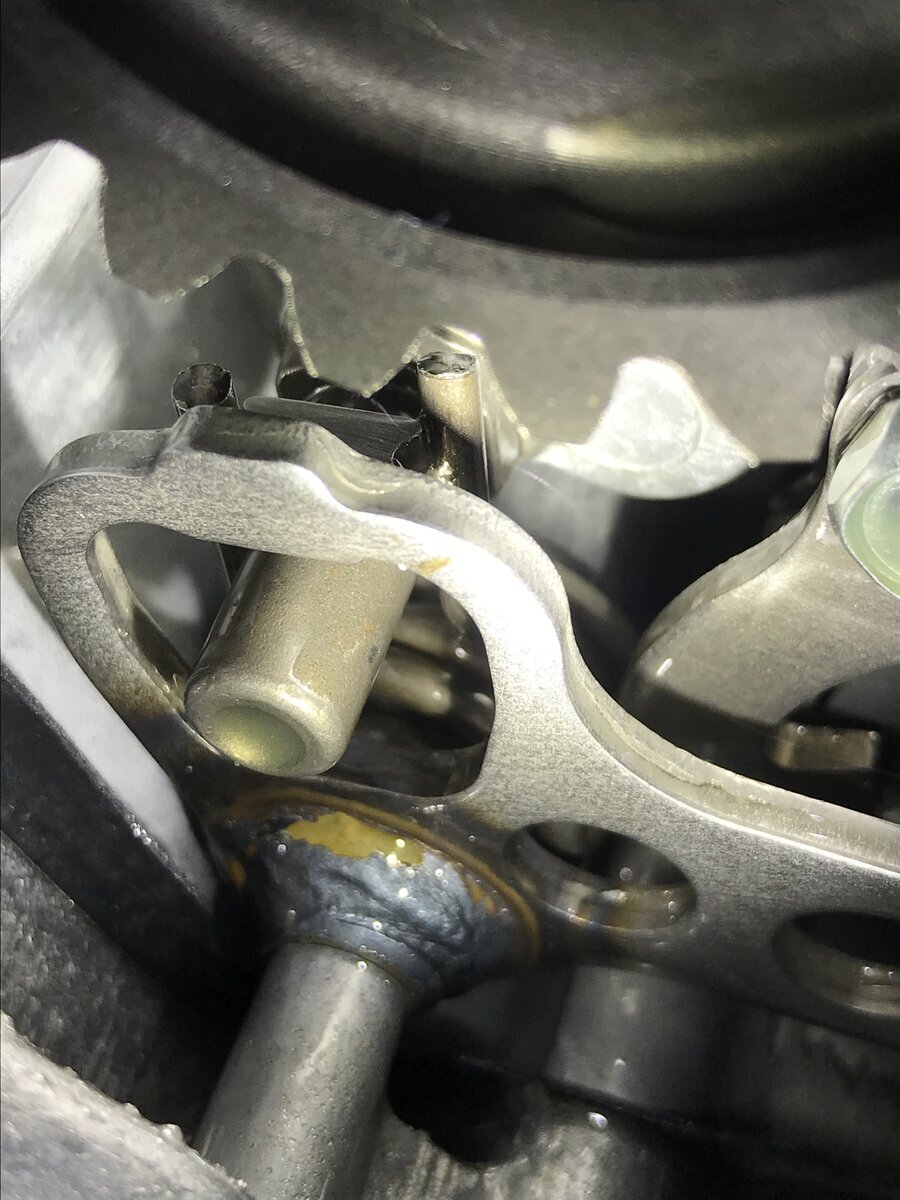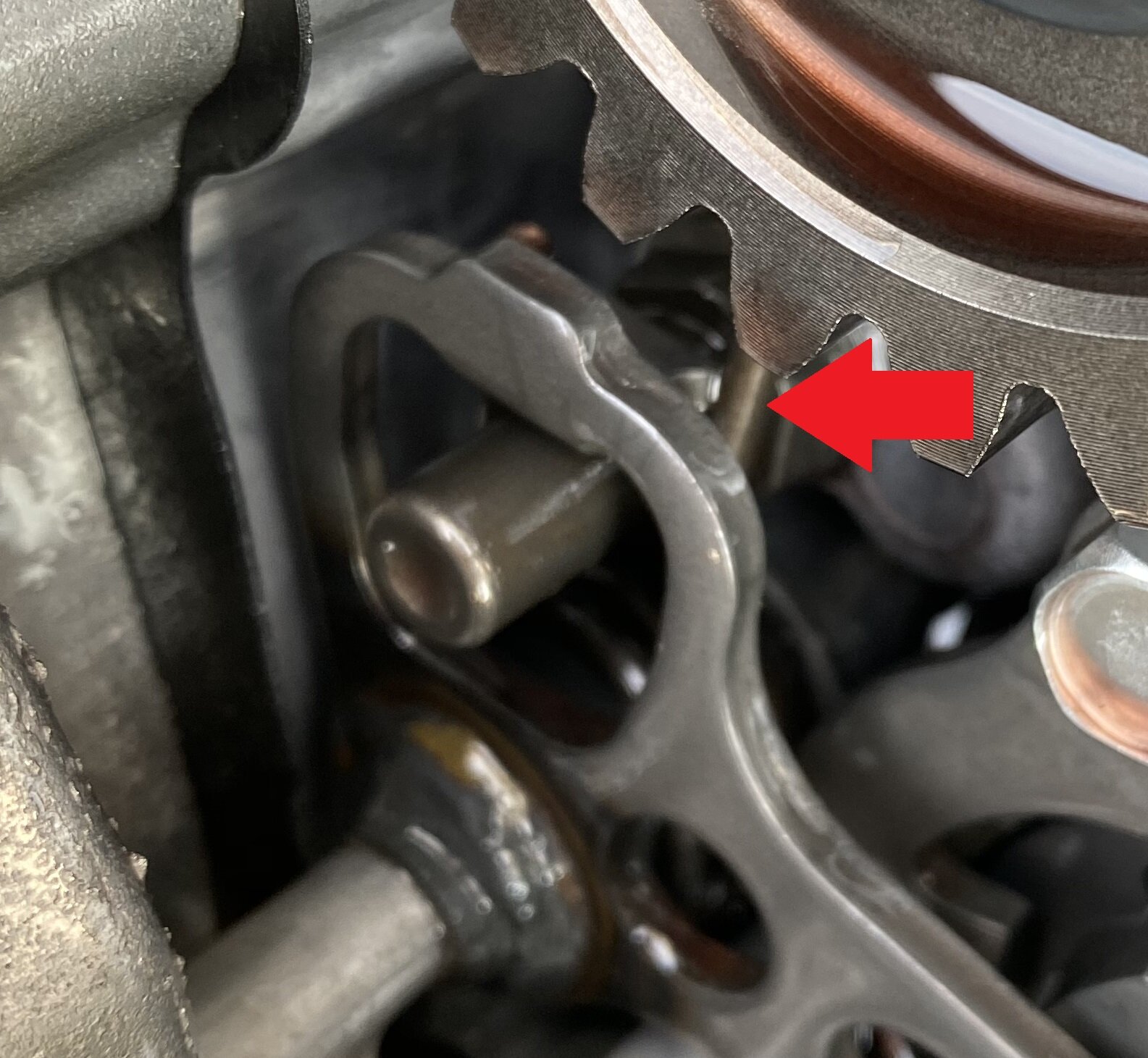Taking possession of a new dirt bike probably feels the same no matter if you received one as a kid on Christmas or you went to the dealer and spent your hard earned money on one as an adult. Fire that sucker up and ring it's guts out, fill it up with premix and do it again.
Unfortunately, dirt bikes are extremely complex machines that require an incredible amount of parts and systems to work in almost perfect harmony to get you through that rhythm section or back out of the mountains. In manufacturing, just like in anything else, stuff happens. Tools and equipment used to stamp a clutch cover or mill an engine case wear out in ways unnoticeable to the naked eye. Assembling all of those parts is every bit as technical, too. There’s a lot of work that goes into that shiny new penny sitting on your dealership floor. Occasionally, the smallest of variations in any of those processes can cause a lot of headache for the end user…
A little background:
I purchased my first ever - wanted one since McGrath was riding blue - couldn’t believe it was mine - brand new 2020 Yamaha YZ250(X) this past spring. For those of you unfamiliar, the YZ250 two-stroke has basically gone unchanged since 2006 (and other than the SSS forks, longer than that). I opted for the X version because I’m a woods guy who has little intention of leaving the ground for very long. Generally speaking from a maintenance and mechanical standpoint, the YZ250X isn’t much different from the motocross version YZ250. You can read the specifics in other places that are much more knowledgeable than me.
I got the bike home and after taking several beauty shots, I spent the full day breaking the bike in. Warming the motor up, running it through the gears, inspecting nuts and bolts, the whole nine yards. On the second day I headed straight for the local off-road park. I spent a few hours on my go-to grass track, loaded up and headed to the next off-road area on my way home. This time I actually took off on some trails and just enjoyed the beautiful day on my beautiful fresh motorcycle.
After a few miles I couldn't get the bike to downshift and the shifter had a "dead" feeling, for lack of better term. It would click up one gear but wouldn't go down. If I stopped and finagled with it for a few minutes it would eventually work but after having this happen twice, it was time to call it a [bad] day. I couldn’t believe my brand new dirt bike had something this bad wrong with it.
I took it to the dealer and told them I think the shift spring came loose (I've had a similar thing happen on a KX125 several years ago). I pick the bike up the next weekend and immediately headed to the trails. Within a 20 minute session on a turn track, no shifter. At this point I’m infuriated.
I took the bike home and disassemble it myself. After pulling the clutch basket, I see that my assumption was right. The shift spring straddling the shift shaft was not aligning correctly to engage the shifter.
This seemed like a simple fix: pop the spring back into the groove on the shift shaft and off you go. Problem is, there’s nothing there to keep these components aligned if there was something wrong in the manufacturing. When I took the bike to the dealer for repair the first time, they told me it was installed backward so they took it off, flipped it and put it back on. Looking at the parts fiche, everything appeared to be installed in the proper order. I chalk it up to a manufacturing defect but nothing was visibly apparent to the naked eye, so the jury is still out.
I had this problem pop up on four separate instances. Two of them happened during woods races, which I can assure you are not fun to finish without access to first, fourth, or fifth gears. I just did not feel comfortable digging any further into the bottom end of a dirt bike (a brand-damned-new one at that) than the clutch cover and clutch basket, so i wasn’t able to install a new spring. After having to end a race early, however, I decided now was the time to see if I can get this thing fixed!
Apparently this is a common problem on both the YZ250 and YZ250X. Both bikes call for the same part number for both the Shift Shaft and the Torsion Spring. So, pretty good indication there’s some issue in manufacturing. There’s more than one thread on Thumpertalk:
https://thumpertalk.com/forums/topic/1335945-dead-shifter/ This is the thread I started and have updated a few times.
https://thumpertalk.com/forums/topic/1344242-brand-new-yz250-nothing-but-problems/
https://thumpertalk.com/forums/topic/1341636-2020-yz250x-not-shifting-3hrs-on-crate-bike/
Screen grab from the RMATV parts fiche uploaded to Thumpertalk showing the location of the torsion spring and the shift shaft.
I’ve even heard mention of a similar issue on the SwapMotoLive Podcast a few months ago. Michael Antonovich bought a 2020 YZ250 and had shifting problems almost immediately. He mentioned he was talking to Yamaha about it but I’ve never heard any more mention.
If you’ve ever read the horror stories or looked up what a dirt bike bottom end looks like disassembled, you’re probably apprehensive about digging into it as well. The good news is, in order to access the shift (torsion) spring on a YZ250, you only have to remove the right outside ‘cover’ of the case. Here’s the highlights of how to get this thing swapped out:
The OEM parts can be found under the Shift Shaft schematic. The Shift Shaft is item #1 and the Torsion Spring is listed as #5 at RMATV: https://www.rockymountainatvmc.com/oem-schematic/7.
Drain the gear oil and radiator coolant. Disconnect the radiator hose at the water pump.
Remove the easy stuff first: brake pedal, kickstart lever, gear shift lever. There’s nothing unique or tricky about removing any of those. Just loosen the bolt on the shifter and kickstart lever. However, you do need to thoroughly clean the exposed part of the shaft that the gear shift mounts to; this pulls through seals in the engine cases and you don’t want to risk nicking those seals as you pull it through. The rear brake pedal also has a spring that needs to be popped off.
The exhaust pipe is held in place by a couple bolted-on hangers and a couple of stiff springs at the exhaust port on the cylinder. They make spring pullers just for this but I got by with some needle-nose pliers.
You don’t need to remove the clutch cover or water pump covers individually. However, there are a few bolts that run completely through each of those covers, through the case cover you’re pulling off, and into the main case. Those will have to be removed.
The governor cover (upper right side) needs to be removed to get to the powervalve linkage. The governor push rod (linkage arm) needs to be disconnected. This is just one bolt up near the exhaust port, there is a slit next to the bolt for you to use to hold the linkage to keep it from rotating.
Taking out the clutch assembly is a write-up all its own. There’s plenty of tech videos out there from Rocky Mountain ATV/MC and others. For the most part, any dirt bike or sport ATV follows the same procedures. The most difficult part being the removal of the nut that holds the clutch hub.
As far as reassembly, just refer to the manual for the torque specs on each bolt and do not overtighten. Getting the case cover back on the engine requires turning the engine over a bit to align all of the gears and making sure the governor goes back in place correctly. Don’t forget the dowel pins in the case, make sure those are in place and the case cover is fully seated before you begin tightening anything.

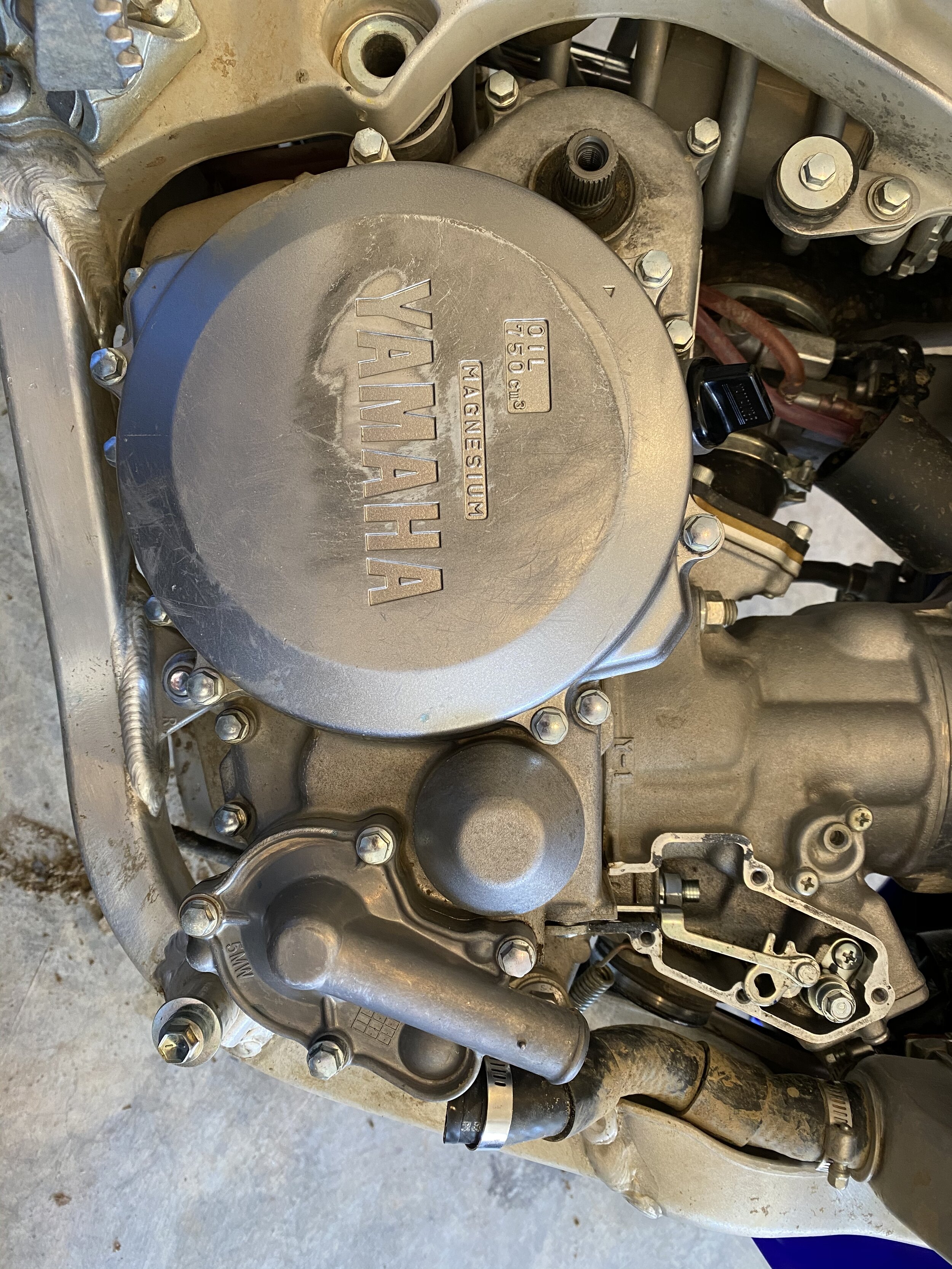
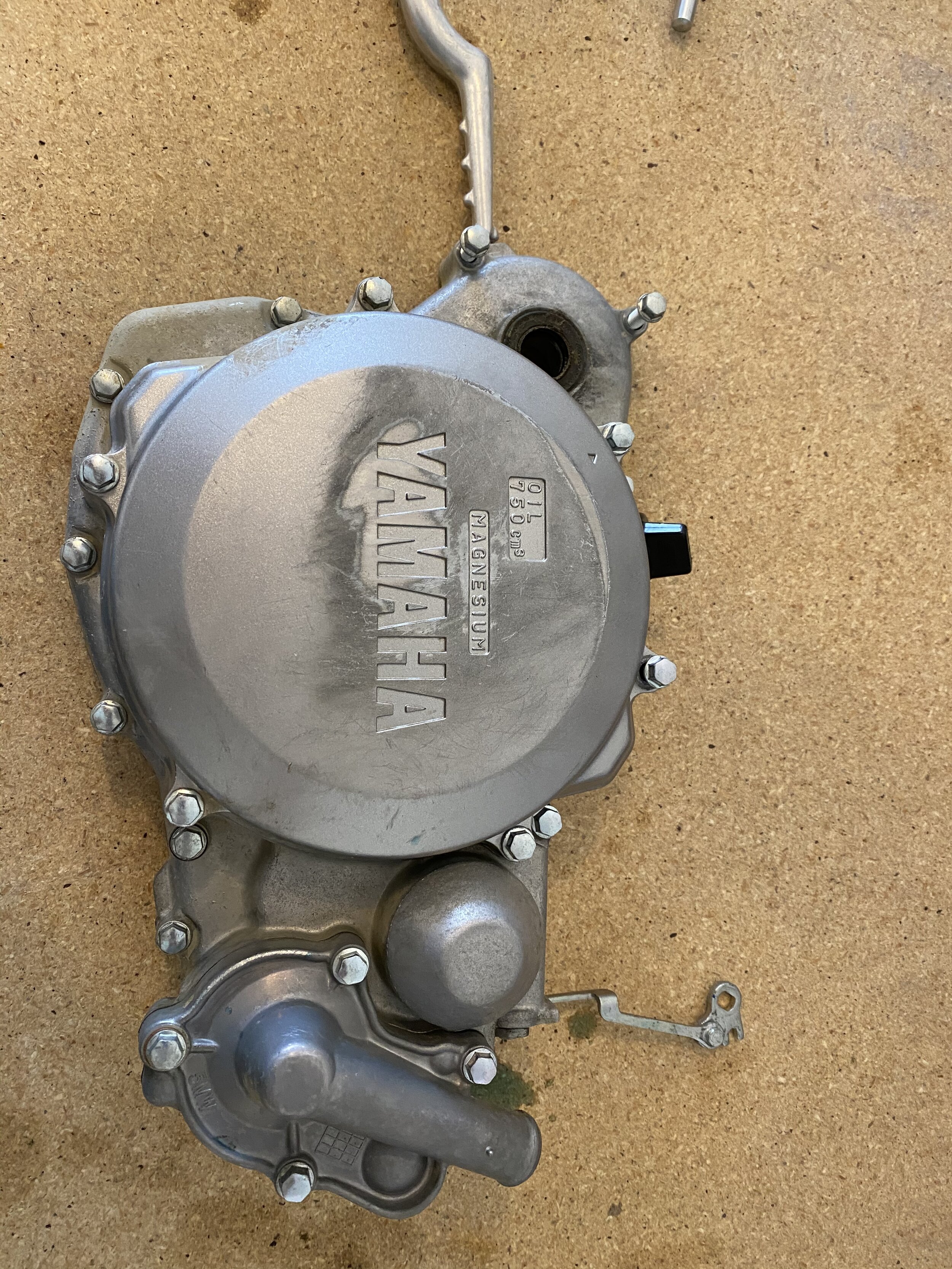
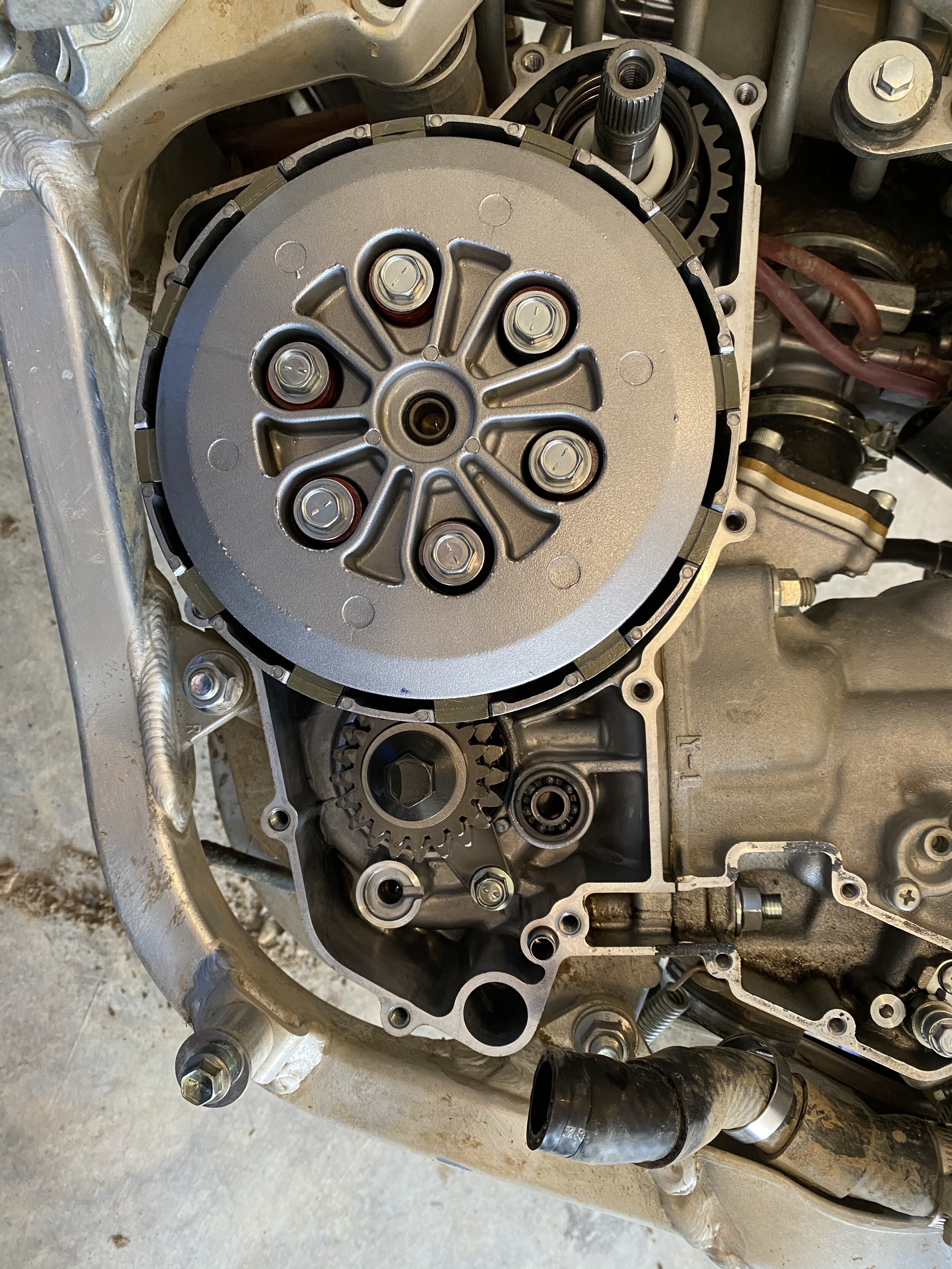
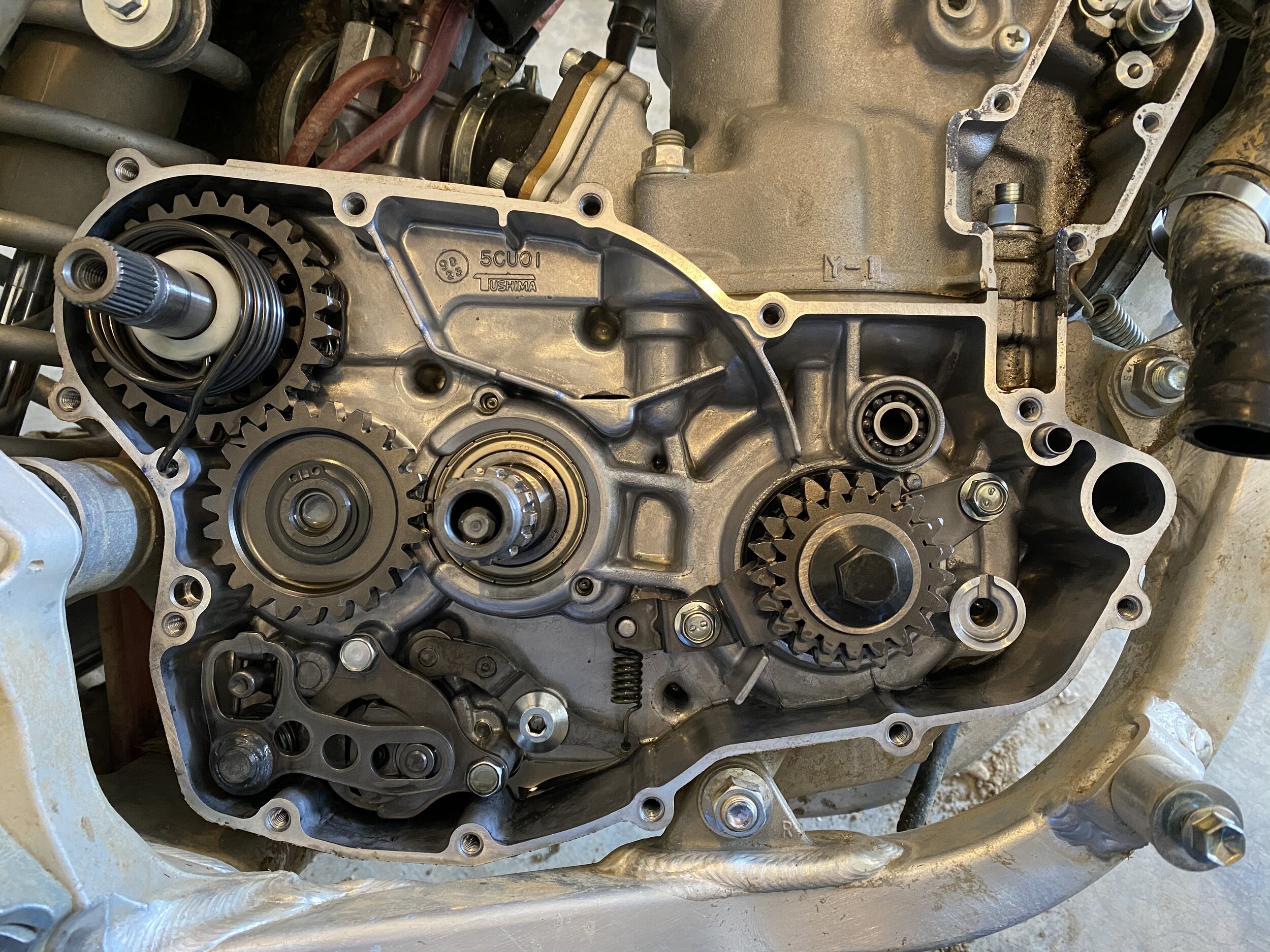
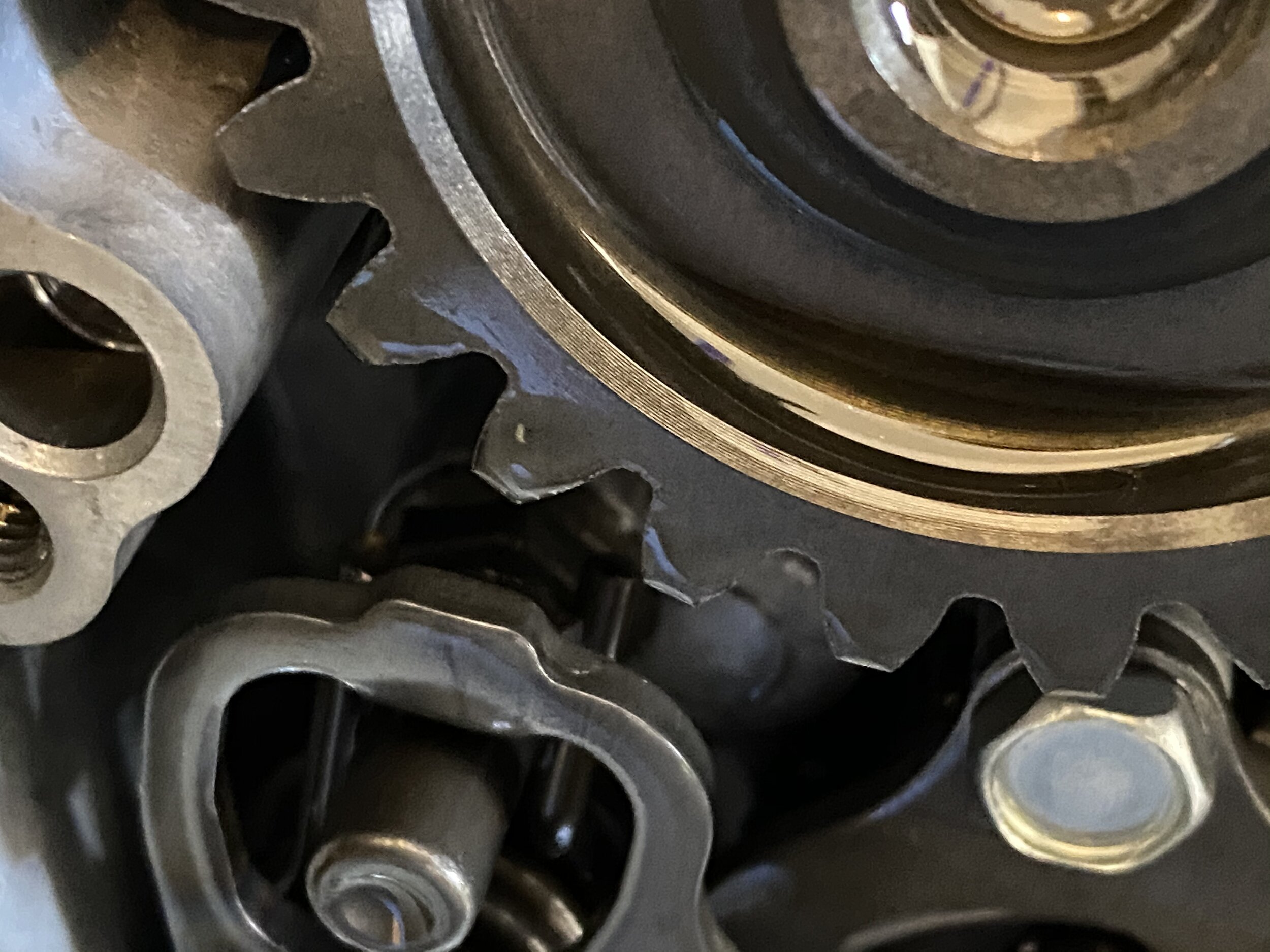
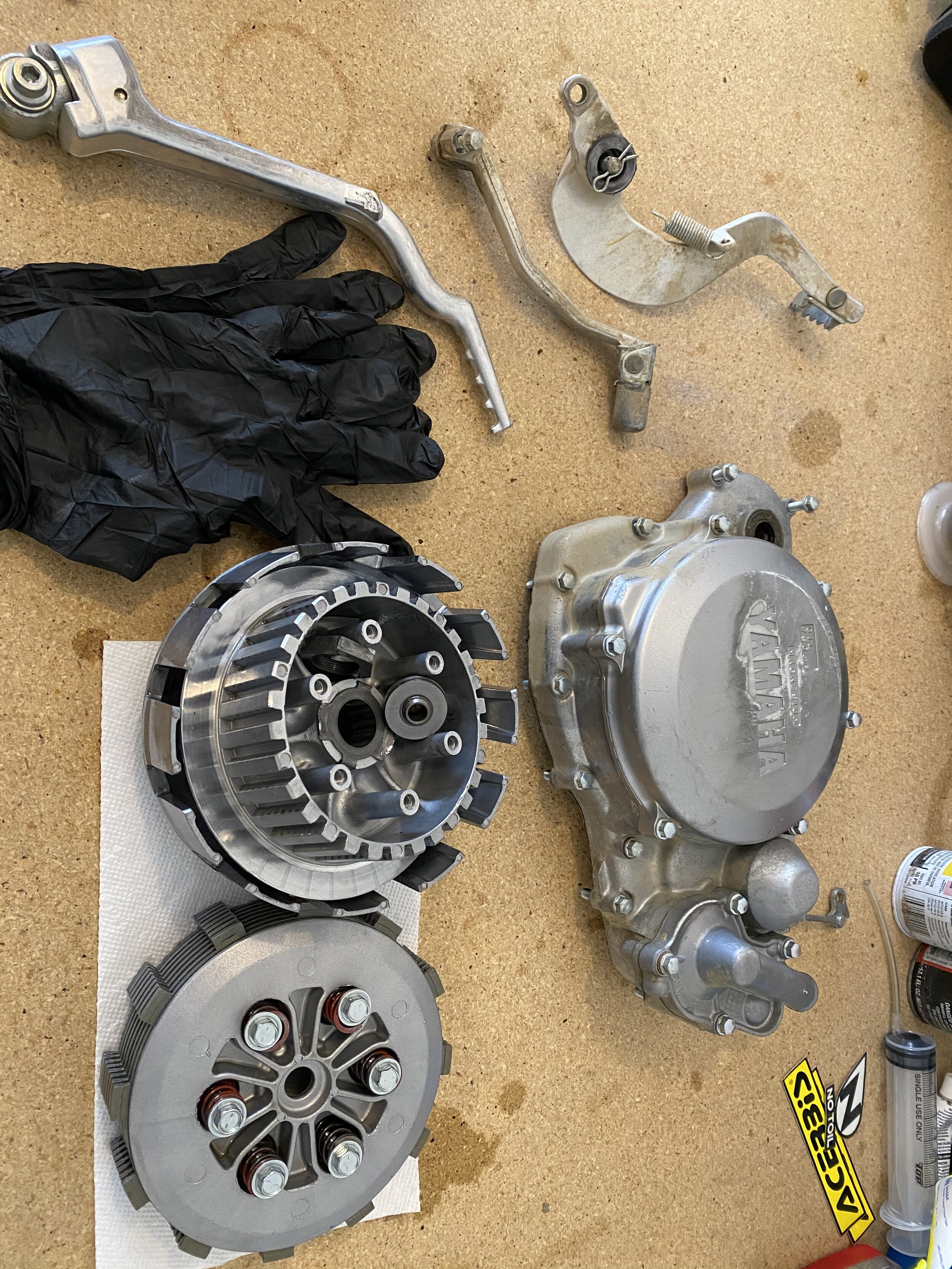
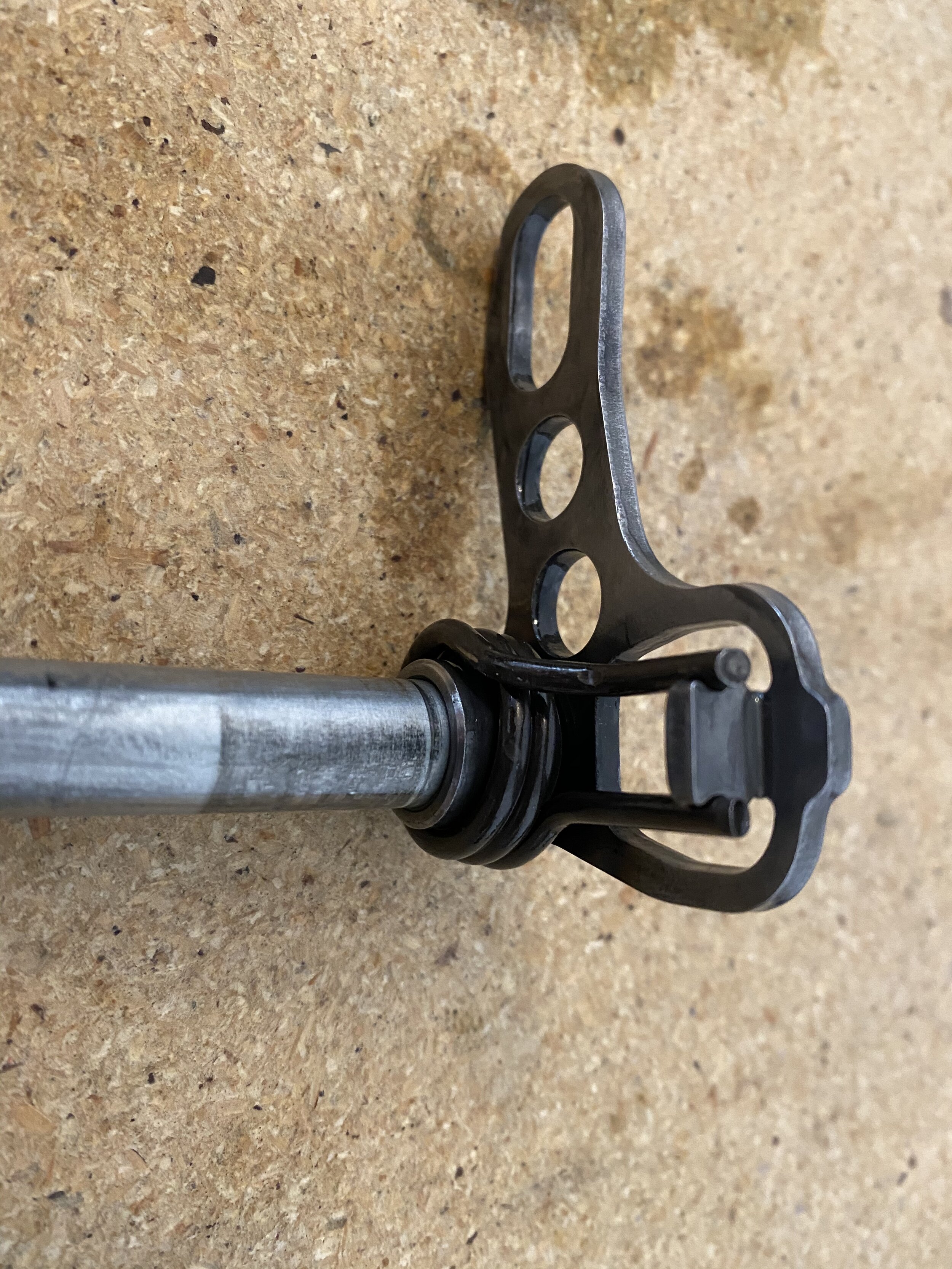
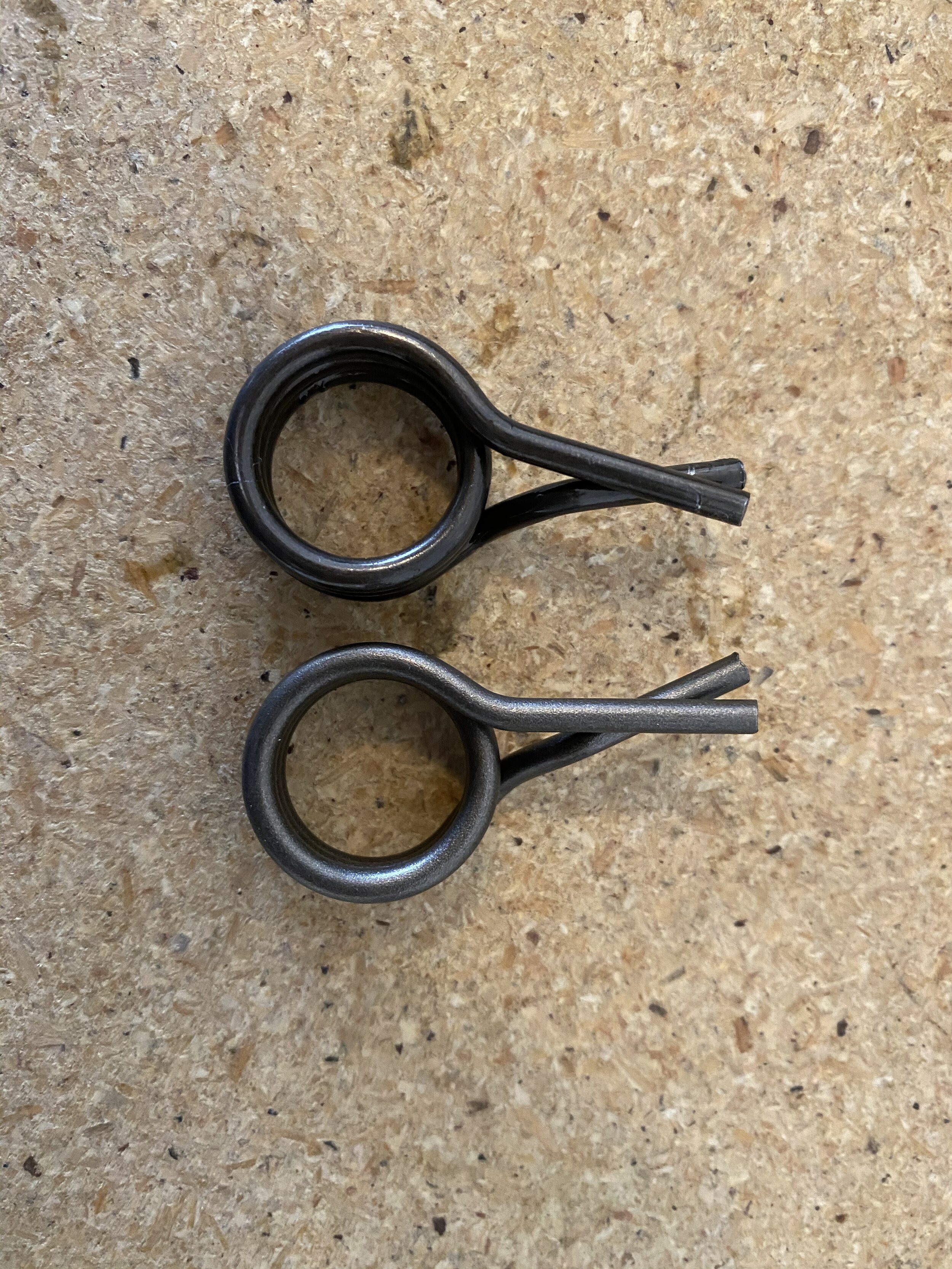
These recommendations are from a shade tree mechanical that can by no means be considered a professional. This is just my experience and what I’m exploring as an option to keep my dirt bike operating as it should. Take your bike to a dealer if it's having issues and take my opinion with a grain of salt.
